Text and photos by Keegan Curry, SPP Taylor’s Checkerspot Butterfly Program Coordinator

(Left to right) Jessica Stevens, Nicole Alexander, Cynthia Fetterly (seated), Susan Christopher, and Alexis Coleman pose in front of their original artwork. Ms. Stevens and Ms. Christopher painted this banner to welcome Girl Scouts Beyond Bars to the butterfly lab for a day of activities, including a unique Taylor’s checkerspot merit badge designed by Ms. Alexander.
Inmates at Mission Creek Corrections Center for Women (MCCCW) continue to amaze us. Each year, a group of dedicated technicians raise and release thousands of federally-endangered Taylor’s checkerspot butterflies. Not only do these technicians follow rigorous laboratory protocols, they develop their own personal expertise and remain adaptive to the myriad challenges of animal husbandry.
This year we were lucky to have three returning technicians on the team. Jessica Stevens, Cynthia Fetterly, and Susan Christopher have completed multiple seasons in the butterfly lab and they have an in-depth understanding of each life stage. Their experience has taught them how to read these animals down to the finest details, like determining the “instar” of a growing caterpillar or predicting how the weather might influence adult mating behavior. Returning technicians play a crucial role, and it is equally important to recruit new participants. This winter we welcomed Nicole Alexander and Alexis Coleman to the butterfly crew and they began their crash course in Taylor’s checkerspot rearing. By the end of the flight season, Ms. Alexander and Ms. Coleman were well-versed in everything from pupation to egg collection!
Thanks to all of the staff from WA Department of Corrections and MCCCW who work tirelessly to coordinate this program. And of course, we wouldn’t be here without support from the Oregon Zoo and Washington Department of Fish & Wildlife. It means a lot to have zookeepers and biologists coming to MCCCW and giving incarcerated technicians the confidence to work with this fragile and beautiful species.
Take a look at these photo highlights from the past few months.

Taylor’s checkerspot caterpillars in their newly-formed cocoons. They remain in this state for up to three weeks and then emerge as butterflies (also known as “eclosion”).

(Left to right) Cynthia Fetterly, Susan Christopher, and Jessica Stevens inspect a pupa to see if it is ready to eclose.

After wiggling free of their cocoons, two adult butterflies dry their wings. It can take several hours after eclosion before they are ready to fly.

Cynthia Fetterly searches for butterfly eggs. She has to check every inch of the plant and down in the rocks at its base. It’s a tedious but crucial task.

This female just laid a fresh cluster of eggs (the tiny yellow orbs on the leaf to her left).

(Left to right) Susan Christopher teaches new technicians Alexis Coleman and Nicole Alexander how to safely handle adult checkerspots. Technicians inspect the size and shape of the abdomen to determine whether butterflies are male or female.

All adult checkerspots must be weighed and measured. Notice how this technician grasps the butterfly with the sides of her fingers, avoiding harm to its wings.

Jessica Stevens keeps a watchful eye over adult breeding tents.

Mottled sunlight and a warm breeze are a checkerspot’s ideal conditions.

The adult life stage is a critical period in the captive rearing program. Technicians conduct dozens of breeding introductions each day, keeping track of each individual’s “matriline” in order to maintain genetic diversity.

Breeding Taylor’s checkerspot takes patience. After hours of waiting and adjusting environmental conditions, these two finally decided to mate.

Susan Christopher leads a tour of the butterfly lab for a documentary crew from PBS Nature. Photo by Kelli Bush.

PBS Nature gathers footage of Susan Christopher and Nicole Alexander double-checking their breeding data. Photo by Kelli Bush.

It’s hard to deny the charm of the Taylor’s checkerspot butterfly. We extend our gratitude to the technicians at MCCCW who continue to prove that incarcerated people can make a difference in conserving biodiversity.













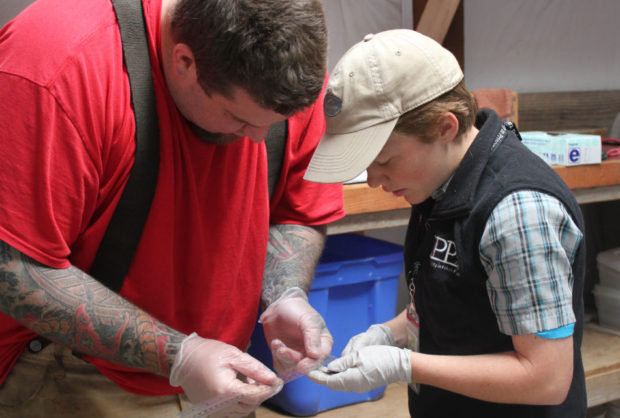
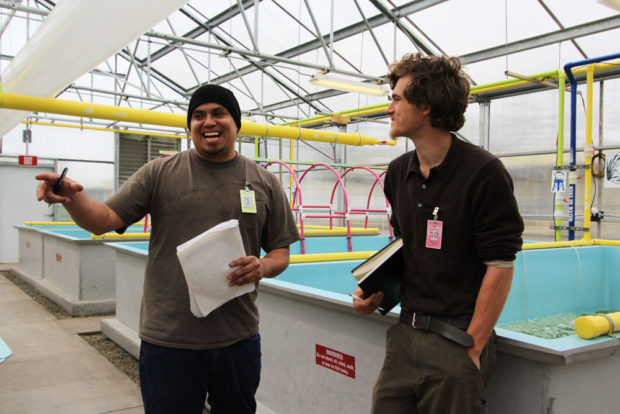
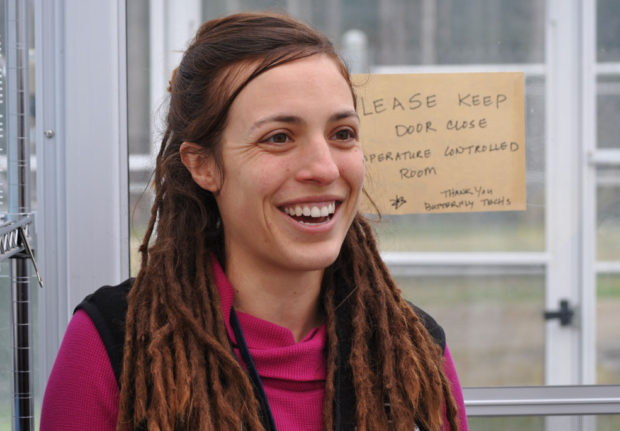
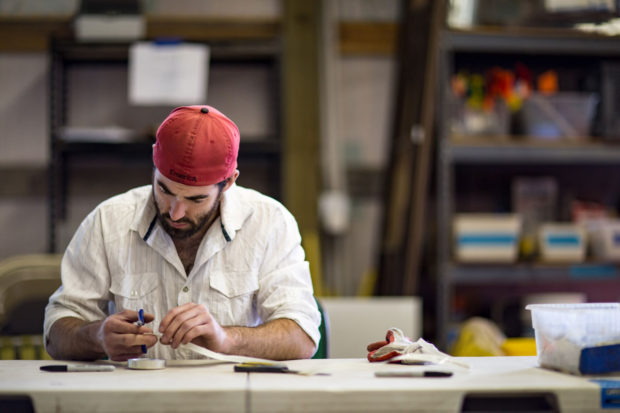
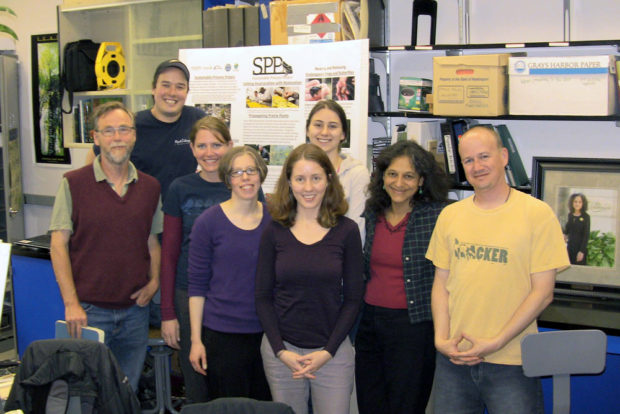
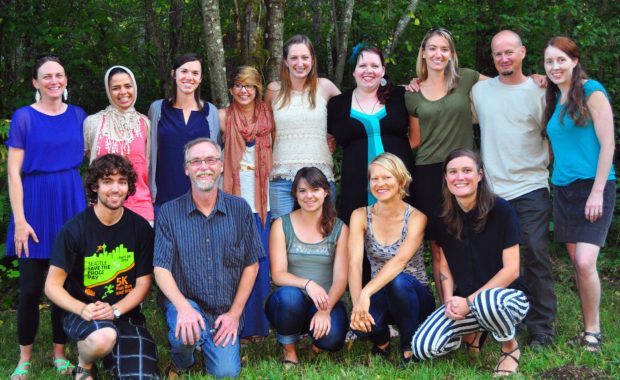
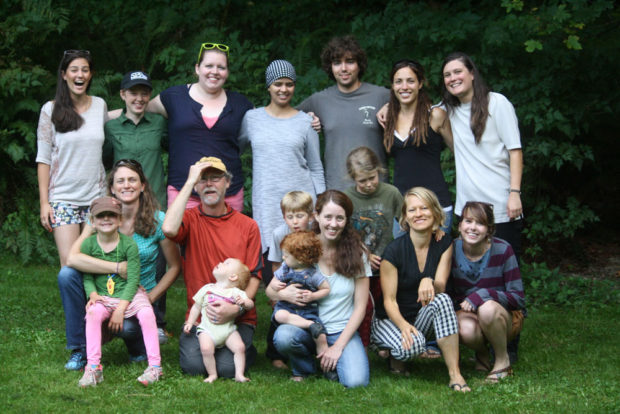 Graduation brings an end to student-staff employment. Each coordinator trains their successor, which is as much about introducing them to the culture and ways of thinking as it is about program policy and protocols. Each turnover is bittersweet. We have to say good-bye to someone we have relied on and invested in, and it is painful to see them go.! At the same time, we get to welcome someone new, and their fresh perspectives helps SPP to continually improve; we can’t get stale! Also, there is the satisfaction of seeing SPP alumni go on to new and valuable endeavors, and we take pride in supporting their ongoing careers and aspirations.
Graduation brings an end to student-staff employment. Each coordinator trains their successor, which is as much about introducing them to the culture and ways of thinking as it is about program policy and protocols. Each turnover is bittersweet. We have to say good-bye to someone we have relied on and invested in, and it is painful to see them go.! At the same time, we get to welcome someone new, and their fresh perspectives helps SPP to continually improve; we can’t get stale! Also, there is the satisfaction of seeing SPP alumni go on to new and valuable endeavors, and we take pride in supporting their ongoing careers and aspirations.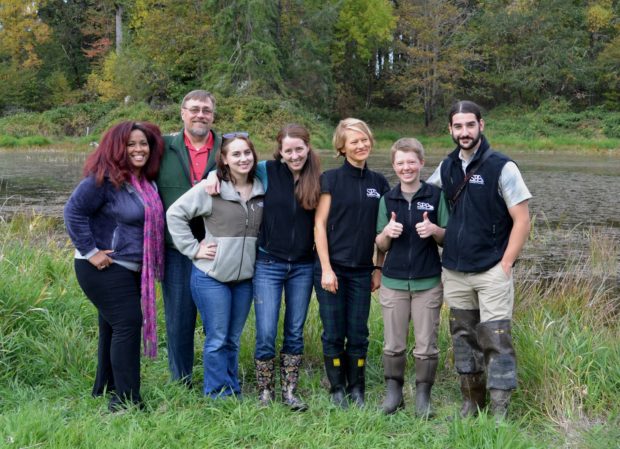
 by Kristina Faires, SPP Program Enhancement Coordinator
by Kristina Faires, SPP Program Enhancement Coordinator



































